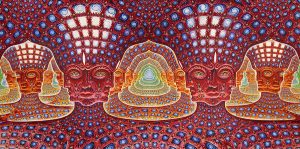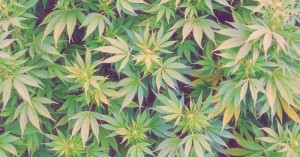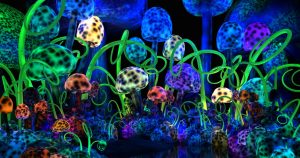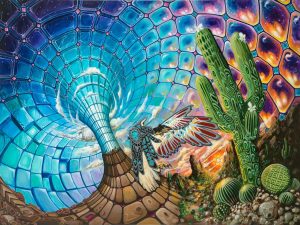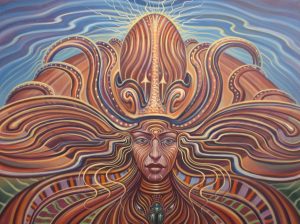Could Psychedelic Plant Medicines Treat Alcoholism?
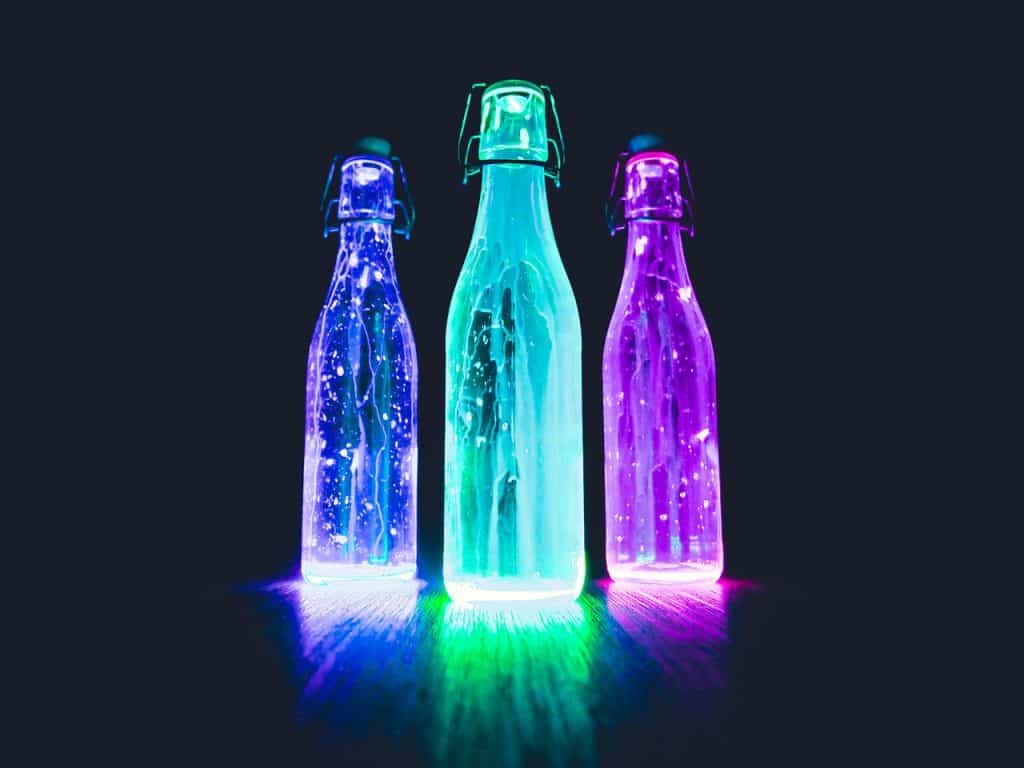
Alcoholism is a serious and tragic global problem. It’s estimated that some 107 million people globally suffer from alcohol use disorder (AUD),[1] and it’s currently ranked as number seven in leading causes of death and disability worldwide.[2] Although these statistics aren’t getting much worse over time,[3] they do reflect how an addictive substance that causes millions of deaths[4] and even more illnesses yearly has installed itself as an ever-present constituent in many societies.
It’s difficult to untangle the causes of alcohol abuse, as there are myriad interacting factors that may contribute to its formation. These include: presence of anxiety, depression, or other mental disorders,[5] social status or GDP,[6] alcohol cost and availability, its history of use and the societal attitude toward it, which includes religion, laws, and many other factors. Wherever and however much it’s used, though, the consensus is that the damage done by alcohol far outweighs any benefits it may have.[7]
Could psychedelic plant medicines provide some more-than-needed help in the battle against this dangerous addiction?
The Current Approach to Treating Alcohol Use Disorder
Current treatment options for AUD include medicalization, psychotherapy, and group counseling. Before rehabilitation begins, however, the drinker needs to come to terms with their addiction. This usually happens over a dramatic escalation of events, and sometimes an intervention from loved ones.
Once there is a will to change in the individual, the treatment begins with a detoxification procedure. The body needs to eliminate all the alcohol, and withdrawal symptoms are the first hurdles to overcome.[8] The sudden absence of ethanol in the blood disturbs the homeostasis the drinker’s body got habituated to. Specifically, inhibitory GABA and excitatory glutamate transmitter activities start returning to their normal levels. Both of these had previously been modulated by alcohol, and the reversal causes intense changes in the mind and body.
Depending on the severity of the AUD, the withdrawal symptoms can range from insomnia, tremulousness, anxiety, gastric problems, headaches, and palpitations to intense tremors, seizures, and frightening hallucinations. Medication can help alleviate these sufferings, but they are a necessary evil of the detox process.
After the body has adjusted itself to the lack of alcohol, the physiological cravings abate, but the psychological habit remains. The challenge then becomes to break the patterns of thinking around alcohol, and shift one’s mindset to a state of stable awareness of how slippery the liquor slope is and where it leads.
The conventional way to go about this is by taking medication which makes alcohol taste repulsive or diminishes cravings, and going to individual therapy and group counseling. Combined, these methods are sufficiently effective. Based on a large-scale study done on the US population from 2001, about a third of all drinkers sees abstinent or non-abstinent recovery.[9] Another study from 2005 reports a rate of remission of over 90% after a two-year follow-up with patients cured of alcohol dependence.[10]
Image credit: Alex Grey
Can Psychedelic Plant Medicines Help?
Psychedelic substances have shown some remarkable results in expediting this process. Like any destructive thought patterns, alcohol addiction needs to be dismantled in its core. Its origins should be brought to awareness, the potential dangers should be clearly internally visualized, and motivation should be generated to make peace with the causes, and fortify the intention to overcome them.
This is exactly what psychedelic plant medicines can do, and it’s why even single doses of some of them have been reported to have had immediate, profound, and lasting effects on drinking habits.[11]
Cannabis
Although it’s usually not counted as a psychedelic, cannabis is a psychoactive plant, and, with over 200 million active users,[12] it’s the most widely consumed psychoactive substance worldwide.[13] In a recent examination of the link between alcohol purchase and medical marijuana laws in the US, it was found that monthly alcohol sales dropped by 15% in the counties in which medical marijuana was legalized.[14]
The researchers concluded that there seems to be ample overlap between cannabis and alcohol users, and they argued that in some sense they may be considered strong substitutes for each other. Seeing as medical marijuana accounts for a small percentage of overall cannabis users, it would be interesting to see how full legalization would influence alcohol consumption. The results from this study are optimistic.
Still, it’s important to highlight that, although cannabis hasn’t been found to have any significant adverse health effects in long-term users,[15] it is well known to cause psychological dependence.[16] Replacing one addiction with another definitely isn’t the goal, but, if it causes less harm, it’s better than nothing.
LSD and Magic Mushrooms
Image credit: Jesse-lee Lang
At the end of the ‘60s and the beginning of the ‘70s, dozens of clinical trials were conducted looking into the potential of LSD to treat alcoholism. A meta-study from 2012 identified six eligible randomized trials from this period, and the results unanimously showed significant, sustained results.[17] On average, 59% of LSD patients and 38% of control patients showed improvements. The positive effects of a single LSD dose (both from these and other, non-randomized trials) would last for at least six months and up to 12 months.
A quote from one of the researchers in one of the studies reads: “It was rather common for patients to claim significant insights into their problems, to feel that they had been given a new lease on life, and to make a strong resolution to discontinue their drinking.”
Even more encouraging results come from a recent survey done on a population of AUD individuals who had taken a moderate or high dose of LSD or magic mushrooms. The psychedelic experience was followed by a significant reduction in alcohol consumption, leading to an incredible result: 83% of responders no longer met the criteria for AUD.[18] Of course, as an anonymous online survey, this statistic should be taken with a grain of salt, but it surely deserves a closer look.
Mescaline
Image credit: Welch Brothers
Another psychoactive substance that has been reported to have beneficial effects for alcohol addiction is mescaline. This chemical is found in the peyote and San Pedro cacti, that are used traditionally in Mesoamerican and South American shamanism .
Peyote has been used for centuries by Native American Indian communities mostly as a ceremonial agent, but also as a stamina booster and in various medical purposes, such as for relieving pain. With the arrival of Catholic missionaries and conquistadors in the 16th century, diseases such as tuberculosis and alcoholism were carried over to these societies. According to James Slotkin, author of The Peyote Religion: A Story In Indian-White Relations, “[n]either seemed curable by traditional means; the [peyote] religion treated both.”
Although there hasn’t been much concrete research on peyote’s influence on alcoholism, there are myriad positive reports published by influential members of the Peyotist religion and notable ethnologists who spent time with these indigenous communities.[19] The consensus is that peyote seems to make its consumers gradually lose interest in alcohol and ultimately stop drinking altogether.
Dr John Halpern, a psychiatrist from Harvard and long-time researcher of the therapeutic power of psychedelics, conducted a study on the neurophysiological influence of peyote on members of the Navajo community.[20] Some of his participants were followers of the Native American Church, a religious organization in which peyote is consumed ritualistically, in large groups, on a regular basis. His research showed that the cactus has no detrimental effects on the cognitive performance of its users,[21] and his first-hand experience further convinced him of peyote’s powerful anti-addictive properties.
In articles published in 1977 and 1978, Dr Kenneth Blum theorized that certain metabolites of peyote called isoquinolines are identical to the metabolites produced by alcohol and opiates.[22][23] He argued that through this mechanism of action, these alkaloids are able to regulate dependence. A later paper proposed a more in-depth pharmacological relationship model between the two, further elucidating Dr Blum’s assertions.[24]
But, Dr Halpern believes there’s more to peyote’s effects than just its chemistry. According to him, the sacramental and structured use of this substance by communities who love and support their members into wellbeing is highly conducive for positive change. With sub-threshold dosages given to participants during services, he speculates that the setting itself plays a major part in the treatment.
Perhaps this kind of communal ritualism would bring out similar effects from San Pedro, another mescaline-containing cactus used mainly in smaller groups. Although there isn’t any solid peer-reviewed information available on its anti-addictive properties, a nurturing setting should theoretically catalyze addiction healing.
Ayahuasca
Image credit: Amanda Sage
In much the same vein as other psychedelics and entheogens, ayahuasca is able to give its drinker unparalleled insight into their life, and their patterns of thought that drive destructive behavior.
In the first study of its kind, a group of 12 individuals with substance abuse problems were subjected to ayahuasca-assisted therapy. Results were optimistic, with a significant decline in alcohol, tobacco, and cocaine use, and an overall rise in personal well-being and perceived life quality.[25]
Adolescents who use ayahuasca in a religious setting have been shown to be less likely to use alcohol than adolescents who had never taken ayahuasca.[26] This study showed that the context in which ayahuasca is taken is important: having a supportive community is crucial. However, this study is limited in that it uses a very specific group of Brazilian adolescents, and it’s difficult to untangle the effects of the religious environment.
Although we are lacking any rigorous studies, ayahuasca’s capacity to show you a fresh perspective of your struggles could be useful for people hoping to overcome AUD. But it’s important to choose your shaman wisely, and make sure you take ayahuasca in a supportive community.
Hopefully, going by the recent positive developments with sacred plant decriminalization in Oakland,[27] we’ll be seeing more extensive and rigorous studies in the near future.
Ibogaine
Image credit: Swiatoslaw Wojtkowiak
Iboga addiction treatment has seen a great expansion over the last couple of decades, with both legal and not-so-legal clinical options becoming available in Mexico, Costa Rica, Brazil, Australia, New Zealand, and a few other countries.
Ibogaine is an incredibly potent substance that is mainly used for treating serious, sometimes life-threatening opiate addiction.[28] It comes with a long list of health risks,[29] is especially heavy on the heart,[30] and is known to have fatal outcomes at higher rates than any other psychedelic.[31]
Although iboga is often consumed by heavy substance abusers in frail states, it should still never be a first choice in treating alcohol addiction.
If used responsibly and moderately, however, it can yield remarkable results in battling addiction not only to opiates, but also to cocaine, crack, cannabis, amphetamines, alcohol, tobacco, and combinations of these substances. In one study conducted in a substance abuse clinic in Brazil, researchers found an incredible 61% abstinence rate over a period of 5.5 months after a single dose, or 8.4 months after multiple doses.[32] Additionally, they had no adverse reactions nor fatalities in their analysis of 75 users.
The Future Seems Bright
Despite limited formal research, psychedelics are already living up to their abundantly positive anecdotal reputation as effective tools in battling alcohol dependence. The world seems to be moving in the right direction; some psychedelic substances have already been granted “breakthrough therapy” status in the US based on their encouraging preliminary results as psychotherapy aids.[33]
Hopefully, as psychedelic prohibition loosens up and the clinical potential of these substances gets further explored, we will be seeing them become more present allies in our battles against humanity’s greatest plights.
References
[1] https://ourworldindata.org/grapher/number-with-alcohol-use-disorders-country
[2] https://www.ncbi.nlm.nih.gov/pubmed?term=30146330
[3] https://ourworldindata.org/grapher/alcohol-consumption-per-person-us
[4] https://www.who.int/news-room/detail/21-09-2018-harmful-use-of-alcohol-kills-more-than-3-million-people-each-year-most-of-them-men
[5] https://ourworldindata.org/grapher/mental-health-as-risk-for-alcohol-dependency
[6] https://ourworldindata.org/grapher/alcohol-consumption-vs-gdp-per-capita
[7] https://www.thelancet.com/journals/lancet/article/PIIS0140-6736(18)31310-2/fulltext
[8] https://www.uptodate.com/contents/management-of-moderate-and-severe-alcohol-withdrawal-syndromes
[9] https://www.ncbi.nlm.nih.gov/pubmed/15733237
[10] https://academic.oup.com/alcalc/article/41/3/311/93241
[11] https://journals.sagepub.com/doi/abs/10.1177/0269881119845793?journalCode=jopa
[12] https://www.statista.com/statistics/264734/number-of-cannabis-users-worldwide-by-region/
[13] https://www.unodc.org/wdr2016/en/maps-and-graphs.html
[14] https://docs.google.com/viewerng/viewer?url=https://trello-attachments.s3.amazonaws.com/5859e37507a31d4c894a91b6/5a21b2c2c1bcb8c4f60dd1a9/3e5393c5236099c85c694d7f7361874e/SSRN-id3063288.pdf
[15] https://www.ncbi.nlm.nih.gov/pmc/articles/PMC3037578/
[16] https://www.ncbi.nlm.nih.gov/pmc/articles/PMC2797098/
[17] https://journals.sagepub.com/doi/10.1177/0269881112439253
[18] https://journals.sagepub.com/doi/abs/10.1177/0269881119845793?journalCode=jopa
[19] https://www.jstor.org/stable/44126225?seq=1#page_scan_tab_contents
[20] http://discovermagazine.com/2009/the-brain/peyote
[21] https://www.ncbi.nlm.nih.gov/pubmed/16271313
[22] https://www.ncbi.nlm.nih.gov/pubmed/201426
[23] https://www.ncbi.nlm.nih.gov/pubmed/350073
[24] https://www.ncbi.nlm.nih.gov/pubmed/2656285
[25] https://maps.org/research-archive/ayahuasca/Thomas_et_al_CDAR.pdf
[26] https://www.ncbi.nlm.nih.gov/pubmed/16149326
[27] https://www.theguardian.com/us-news/2019/jun/05/oakland-magic-mushrooms-decriminalize
[28] https://www.ncbi.nlm.nih.gov/pubmed/10506904
[29] https://psychedelictimes.com/health-risks-ibogaine-treatment-what-every-ibogaine-provider-should-ask-you-for/
[30] https://www.ncbi.nlm.nih.gov/pmc/articles/PMC4382526/
[31] https://www.ncbi.nlm.nih.gov/pubmed/16698188
[32] https://www.ncbi.nlm.nih.gov/pubmed/25271214
[33] https://www.inverse.com/article/50176-fda-okays-psilocybin-therapy-for-depression

